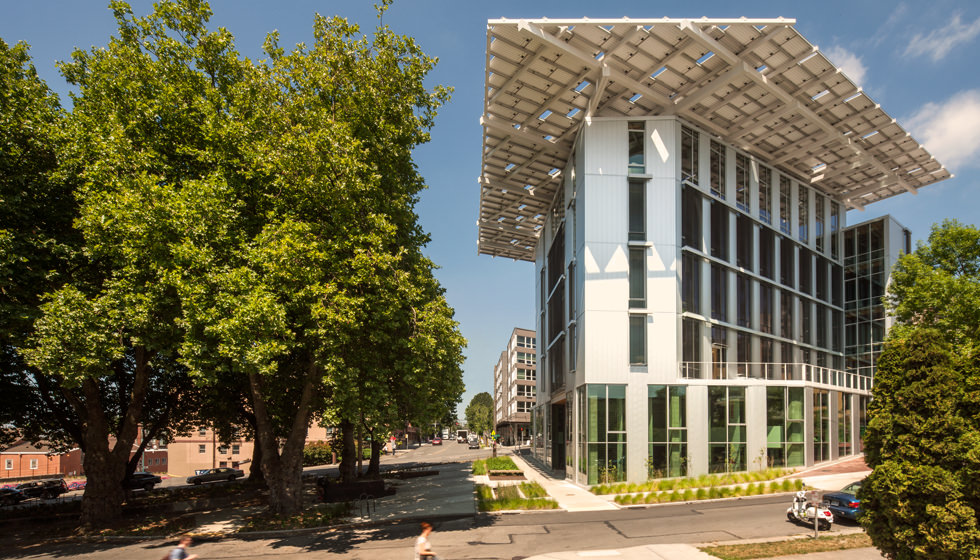
The <span class=”custom-style-green”>Greenest</span> Commercial Building in the WorldThe goal of the Bullitt Center is to <a title=”Message From Denis Hayes” href=”https://bullittcenter.org/vision/message-from-denis-hayes/” data-mce-href=”https://bullittcenter.org/vision/message-from-denis-hayes/”>drive change in the marketplace faster and further</a> by showing what’s possible today. The era of harm reduction, half steps, and lesser evils is behind us. As a society, we need to be bold in ways that were once unimaginable.


The Greenest Commercial Building in the World
The goal of the Bullitt Center is to drive change in the marketplace faster and further by showing what’s possible today. The era of harm reduction, half steps, and lesser evils is behind us. As a society, we need to be bold in ways that were once unimaginable.
- Message From Denis Hayes
- Living Building Challenge
- Bullitt Foundation
- EcoDistricts
- Building Features
- Product List
- Project Team
- UW Center for Integrated Design
- Photo Gallery
- Living Proof Blog
- McGilvra Place Park
The Bullitt Center is located at: 1501 East Madison Street Seattle, WA 98122
Copyright 2013, Bullitt Foundation | Legal Site by DEI Creative
Case Study: Living Proof
What it took to design and build the Bullitt Center, by Rob Pena
Materials: As-built product list
The Bullitt Center team worked for 2+ years identifying products without Red List chemicals.
Media Coverage
Media outlets around the world have covered the Bullitt Center. Review them here.
Net Positive Energy Over First Decade
The Bullitt Center Generated 30% More Energy Than It Used in Its First 10 Years Building shows what’s possible...
Oct 1: National Solar Tour
As part of the National Solar Tour, the Bullitt Center will be offering tours this Saturday, October 1, 2022...
Composting Toilets: Lessons Learned
The Bullitt Center was designed to show what’s possible. It is exploring scores of new ideas in an effort...

Tour the Bullitt Center Virtually
Look under the hood to see how it works
250 years : Lifespan of the building
14,303 sq.ft.: Area of solar array
16 kBtu/sq.ft./yr: Energy Use Index
400 feet: Depth of geothermal wells
50,000 gal: Size of cistern
362: Toxic chemicals on “red list”
99 out of 100: WalkScore for site
26: # of geothermal wells
950 sq.ft.: Size of rainwater cistern
82 %: Interior with natural daylight
Tour Bullitt
Bullitt center tour overview.
The UW Center for Integrated Design (CID) operates the tour program at the world-renowned Bullitt Center, a Living Building that opened in 2013.
Public Tours
Public tours of the Bullitt Center are offered most Tuesdays at 4:00 PM and Saturdays at noon. Tours typically take about an hour and are limited to 20 guests. Led by trained volunteer docents and UW CID graduate students, these tours can be scheduled online through Eventbrite . Tickets are $10/person and are non-refundable. On the Eventbrite website, search for Bullitt Center Tours in the “Search Events” box, select a tour date from the pulldown and follow the online instructions.
Private group tours of the Bullitt Center can be scheduled through the University of Washington Center for Integrated Design located at the Bullitt Center. These tours are geared towards those looking for a more in-depth understanding of the Bullitt Center’s technical features. These tours are led by a UW CID staff member. Please contact Deborah Sigler, Program Coordinator, for schedule and fee information at [email protected]
* Due to ongoing health concerns around the transmissibility of COVID-19, until further notice, all visitors must bring and wear a face mask.
Virtual Tour
We have created a virtual tour of the Bullitt Center – take a look and get a taste of why this building is so remarkable. Click Here to View
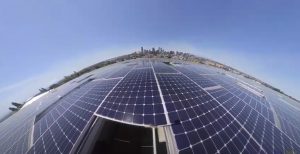
In-Person Tour Overview
To advance both public and professional awareness and support for construction of more high performance buildings, the Center for Integrated Design conducts tours of the Bullitt Center, a certified “living building” that has met the toughest set of environmental building standards in the world. Tours focus on the building’s unique integrated design and resource conservation systems, providing participants a view into the future of urban sustainability.
All tours of the Bullitt Center begin in the lobby on the 2 nd floor , and will include the building’s mechanical and electrical rooms, the greywater and rainwater treatment systems, vacuum toilets, and the “irresistible” stairway. Please use the entrance located at 1501 E. Madison Street . To access the building, you will need to use the call box to dial the UW Integrated Design Lab (IDL).
Tours are accessible for people with mobility challenges. Strollers are NOT permitted on tours and can be parked in the lobby. If a member in your party needs mobility accommodation please contact Deborah Sigler, [email protected] prior to your tour.
We offer the following tours:
Professional.
Geared towards those looking for a more in-depth understanding of the Bullitt Center’s technical features, the CID offers private group tours of the building M-F during office hours. These tours are led by a UW CID staff member. Please contact Deborah Sigler, Program Coordinator, for schedule and fee information. [email protected]
School Groups
In accordance with the University of Washington’s commitment to education, the UW CID offers school groups of ALL ages a unique experiential, environmental learning opportunity. Students use the Bullitt Center as a living laboratory to learn about resource conservation strategies aimed at building “super” buildings – buildings that consume less energy, produce less CO2 and make communities healthier. Thousands of students from across the Puget Sound and the United States have made touring the Bullitt Center part of their curriculum, inspiring students to be 21 st century innovators and next generation environmental leaders.
Also available to qualified school groups, M-F during regular office hours, the UW CID will arrange to come to your classroom and provide a virtual tour presentation of the Bullitt Center called, “Living Proof,” which provides an in-depth overview of the building’s unique integrated design and resource conservation systems. Students will learn how a 52,000 sq. ft. commercial office building in the heart of downtown Seattle operates like a living organism – harnessing all the energy it needs from the sun, using only the water that falls on its roof, producing no waste, and using locally sourced, toxin-free materials. To schedule, please contact Deborah Sigler, Program Coordinator: [email protected]
Also available to qualified school groups M-F during regular office hours, the UW CID will arrange to come to your classroom and provide a virtual tour of the Bullitt Center called, “Living Proof,” which provides an in-depth overview of the building’s unique integrated design and resource conservation systems. Students will learn how a 52,000 sq. ft. commercial office building in the heart of downtown Seattle operates like a living organism – harnessing all the energy it needs from the sun, using only the water that falls on its roof, producing no waste, and using locally sourced, toxin-free materials. For more information, please contact Deborah Sigler, Program Coordinator: [email protected]
Site search
- Los Angeles
- San Francisco
- Archive.curbed.com
- For Sale in Seattle
- For Rent in Seattle
- Development News
- Architecture
- Sustainability
- Neighborhoods
Filed under:
- Capitol Hill
- Seattle Sustainability
Take a Tour of the World's Most Sustainable Office Building - Seattle's Bullitt Center
If you have ever driven up East Madison Street past Pike Street, then you have passed by the world's most green building – most likely without even knowing it. The Bullitt Center , a six-story, 52K square-foot office building designed to last for 250 years, opened on Earth Day just over a year ago . Created as part of the Living Building Challenge under the guidance of Denis Hayes, the president of the Bullitt Foundation, the building's main purpose is to create a sustainable yet economically viable model for an office building.
Located between Capitol Hill and the Central District, the site of the Bullitt Center was strategically chosen for its "high visibility and accessibility" in a predominantly residential neighborhood seeking commercial development. Adjacent to downtown, the Bullitt Center is near many transportation options, with more than 20 bus routes, a street-car line, and a soon-to-be-completed Light Rail station all within half a mile. It also has the highest possible walk score of 100/100.
In 2010, the City of Seattle put into place the Living Building Challenge Pilot Program , which waives all applicable zoning restrictions in an area if designers can meet at least 60% of the criteria to be considered a Living Building. The Bullitt Foundation jumped at this challenge, constructing the first building to be completed under this ordinance. To be a certified Living Building, a process much more stringent than LEED certification, a building must meet 20 strict criteria - including being entirely self-sufficient (net-zero) for water and energy over a period of one year. The Bullitt Center still has two more criteria to meet before it will earn its certification.
The physical design of the Bullitt Center is done in such a way as to maximize upon natural energy resources and encourage environmentally-friendly practices. There is intentionally no parking on site, with a large bike garage instead and showers on each floor to encourage more tenants to bike to work. Elevators in the building require key card access and are purposely out of view to discourage use. Instead, a beautiful stairway, which Dennis Hayes calls the "irresistible stairway," is the most prominent feature for transport in the building with views of downtown. To allow for optimal natural light, the building was designed to be narrower with smaller distances between the core and the perimeter with high ceilings and 10-foot windows.
In order to be energy and carbon neutral, the Bullitt Center employs innovative and novel practices for water, electricity and heating. With 14,000 square feet of rooftop solar panels producing more than 230,000-kilowatt hours of energy annually, the Bullitt Center currently produces more energy than it actually uses . The zoning of the site ensures that rooftop solar panels will have optimal exposure to sunlight because of a restriction on taller, shadow-casting buildings being built to the south.
For heating, the Bullitt Center employs a heat pump system that takes solar heat amassed in the ground from hot summer days and transfers it back into the building during the winter. It is also the first building in the U.S. to have triple-pane windows, which provides better insulation and energy efficiency. The building management system's calendar knows what angle the sun is at and tilts the blinds on every window accordingly to keep the building from getting too hot. The blinds are also located on the outside of the glass to prevent the heat from entering.
For water, the Bullitt Center is entirely self-sufficient. Holes on the roof of the building allow for rainwater to be collected, which is then reused for the building's needs. The large water tank in the basement can hold up to 56,000 gallons of water, even though only 500 gallons is needed for daily consumption. The building also has the world's only six-story composting toilets system , which transforms human waste into fertilizer.
The Living Building Challenge requires that all materials used in the construction process be sourced locally, that is, from within a 500-mile radius. Additionally, there is a 'Red List' of forbidden materials that cannot be used. As a result, certain products, such as the triple-pane windows, were created specifically for the Bullitt Center. The wood used in the building is local Douglas Fir certified by the Forest Stewardship Council. Interestingly, the Bullitt Center is one of the first mid-rise buildings in Seattle since the 1920s that is predominantly made of timber .
The Bullitt Center aspires to transform discussion about sustainability in the built environment into action . While it is currently the greenest commercial building that exists today, the ultimate hope is that other developers will take note and be inspired to construct their own energy efficient buildings. Seattle already has two other Living Building projects under way, including a 120K square-foot building in Fremont developed by Skanska . In the meantime, if you are in need of a new office space, the Bullitt Center has an entire floor available for lease!
Tours of the Bullitt Center are available every Tuesday and Wednesday at 4 pm and Saturdays at noon. Written by Alyssa Campbell · The Bullitt Center [BC] · Living Building Challenge [ILBI] · Seattle Now Home To World's Greenest Office Building [CS] · Take A Tour Of Brooks Sports's Soon-To-Be Stone34 Home [CS]
Share this story
- Hispanoamérica
- Work at ArchDaily
- Terms of Use
- Privacy Policy
- Cookie Policy
- Architecture News
The 'World's Greenest Commercial' Building Opens in Seattle Today

- Written by Barbara Porada
- Published on April 22, 2013
The Bullitt Center, a six-story, 50,000 square foot office building in Seattle that aspires to be the world's greenest commercial building, opens its doors to the public today on Earth Day. This $30 million "living laboratory," designed by Miller Hull Partnership , distinguishes itself from other sustainable projects with its composting toilets, the exclusion of 350 common toxic chemicals - including PVC, lead, mercury, phthalates, BPA and formaldehyde - along with a strict energy and water budget that aims for self-sufficiency under the Living Building Challenge . The environmentally-conscious Bullitt Foundation hopes that the new center will demonstrate that carbon-neutral office space can be "commercially viable and aesthetically stunning," a series of systems that can be easily copied elsewhere without being overly demanding in upkeep.
Read more about the Bullitt Center after the break...
There are quite a few systems that make the Bullitt Center not only unique but one-of-a-kind. One of them is its rainwater collection system into a 56,000-gallon cistern where the water is then filtered and disinfected. Another are the two rows of five bright blue aerobic composters, each about the size of a Fiat 500, composting human waste so odorlessly and efficiently that the first compost extraction will not be required for 18 months. A third is the building's rooftop array of photovoltaic panels, which extend far behind the building's edge to produce around 230,000 kilowatt-hours a year - hopefully just the right amount of energy for a building that is already 83% more efficient than a typical commercial site in Seattle (which is really saying something).

Perhaps the coolest thing about this collection of innovative systems is that they will all be visible. The mechanical and electrical rooms of the Bullitt Center will have large glass windows that display the state-of-the-art engineering, where tourists can scan quick response codes with a smartphone to learn about individual elements. In addition, a kiosk will be set up to let visitors know real-time measurements of the building's indoor air quality, energy consumption, photovoltaic power production and water levels. In fact, the building will be so closely monitored that managers will be able to track down energy consumption to an individual plug.

But science isn't the only thing that the Bullitt Center has going for it. According to office workers, the building is made up of "spectacular views, ample natural light and almost distracting quiet." This is due in part to the exposed, 13-foot-high ceilings and 10-foot-high windows on the upper floors that contribute to an airy loftflike feel and maximize on daylight. It may be the first heavy-timber mid-rise building erected in Seattle since the 1920's, using native Douglas Fir certified by the Forest Stewardship Council for the timber and steel frame.

Another signature feature of the building is a glass-enclosed stairwell nicknamed the "irresistible stairway" that coaxes visitors into climbing it using panoramic views of downtown Seattle and Puget Sound . Paired with a less conveniently located elevator that requires key card access, the stairwell is a smart way to encourage visitors and inhabitants to move while also conserving energy.

One of the only possible setbacks of the Bullitt Center's design may be its lack of parking. In an effort to promote alternative forms of transportation, the designers decided to forgo a traditional parking garage for a series of bicycle racks but many are worried that Seattle's inadequate mass transit could create a lot of problems for commuting employees who will have to figure out other methods or places to park.
Nevertheless, the amazing new Bullitt Center will hopefully be one of only 143 Living Building Challenge projects in 10 countries - one of four in the United States - and will avoid energy and water utility bills for the next 250 years.
References: Bullitt Center Website , New York Times
Image gallery

- Sustainability
世界上最受欢迎的建筑网站现已推出你的母语版本!
想浏览archdaily中国吗, you've started following your first account, did you know.
You'll now receive updates based on what you follow! Personalize your stream and start following your favorite authors, offices and users.
Our Tour of The Bullitt Center: An Intro
November 15, 2013 By Zack Semke
The Bullitt Center’s Brad Kahn leads Hammer & Hand through the Living Building’s systems.
(Editor’s Note: this is the first in a series of Bullitt Center tour posts by Hammer & Hand in Seattle. Please also see our posts about the Living Building’s Discovery Commons , waste management system , energy systems, and water systems .)
To date, Hammer & Hand’s Seattle office has enjoyed 3 months at the Bullitt Center , designed by The Miller Hull Partnership and built by Schuchart, housed in temporary digs on the 4th floor as we build out our suite 250 space (the countdown to occupancy has begun).
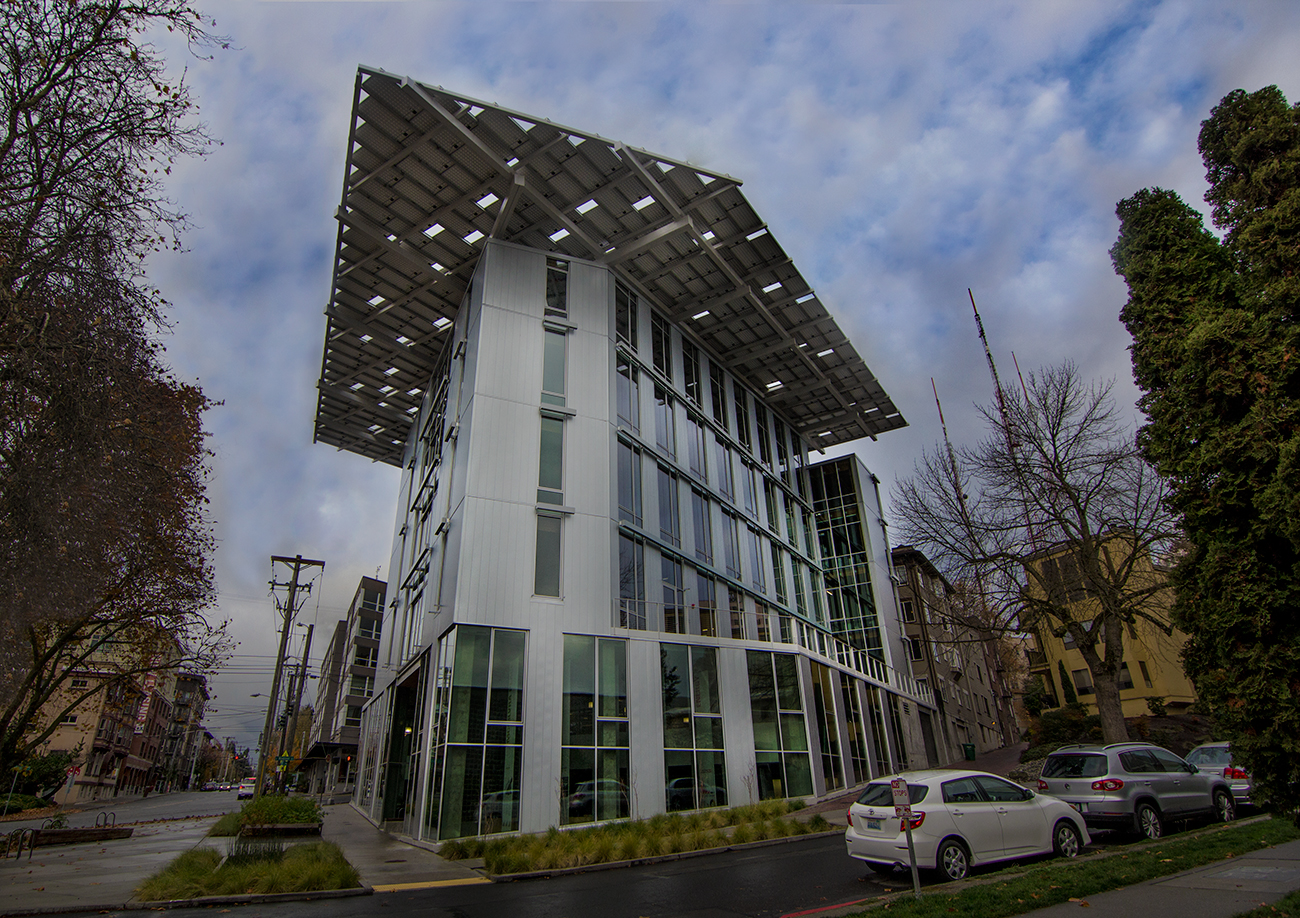
Bullitt Center Photos by Jeffrey Tan
We’ve experienced the building’s benefits firsthand: great light and fresh air, “good energy.” But many of us, myself included, hadn’t actually toured the building and the systems that allow it to claim status as the “greenest office building in the world.” That is, until our recent tour with the Bullitt Center’s Brad Kahn.
As part of his many duties in directing communications for the Bullitt Center, Brad conducts tours for all sorts of groups, from educators, to media, to policymakers. And they all start with the story of the Douglas Fir forest that once stood on this spot before it became 1501 E Madison Street in Seattle’s bustling Capitol Hill neighborhood.
That forest became a metaphor for the Bullitt Center and what the Bullitt Foundation hoped to achieve with the building. Like a Doug Fir forest, the building captures the rainwater that falls on it, uses it for its processes, and releases it back to the environment, filtered and clean. Likewise, the building derives all its energy from the solar rays that reach its roof and shine through its windows. Gray water from sinks and showers is processed onsite through engineered wetlands. Black water from toilets is transformed into compost that will fertilize gardens. Net zero water, energy, and waste: a Living Building .
This thread of biomimicry weaves throughout the building. The Bullitt Center’s array of solar panels jut out past the roof lines like a forest canopy, and like a canopy, has gaps here and there that allow sky and sun to filter through. The gaps also reveal how thin that layer of panels is, removing any misperception of heaviness or mass from the architectural detail overhead.
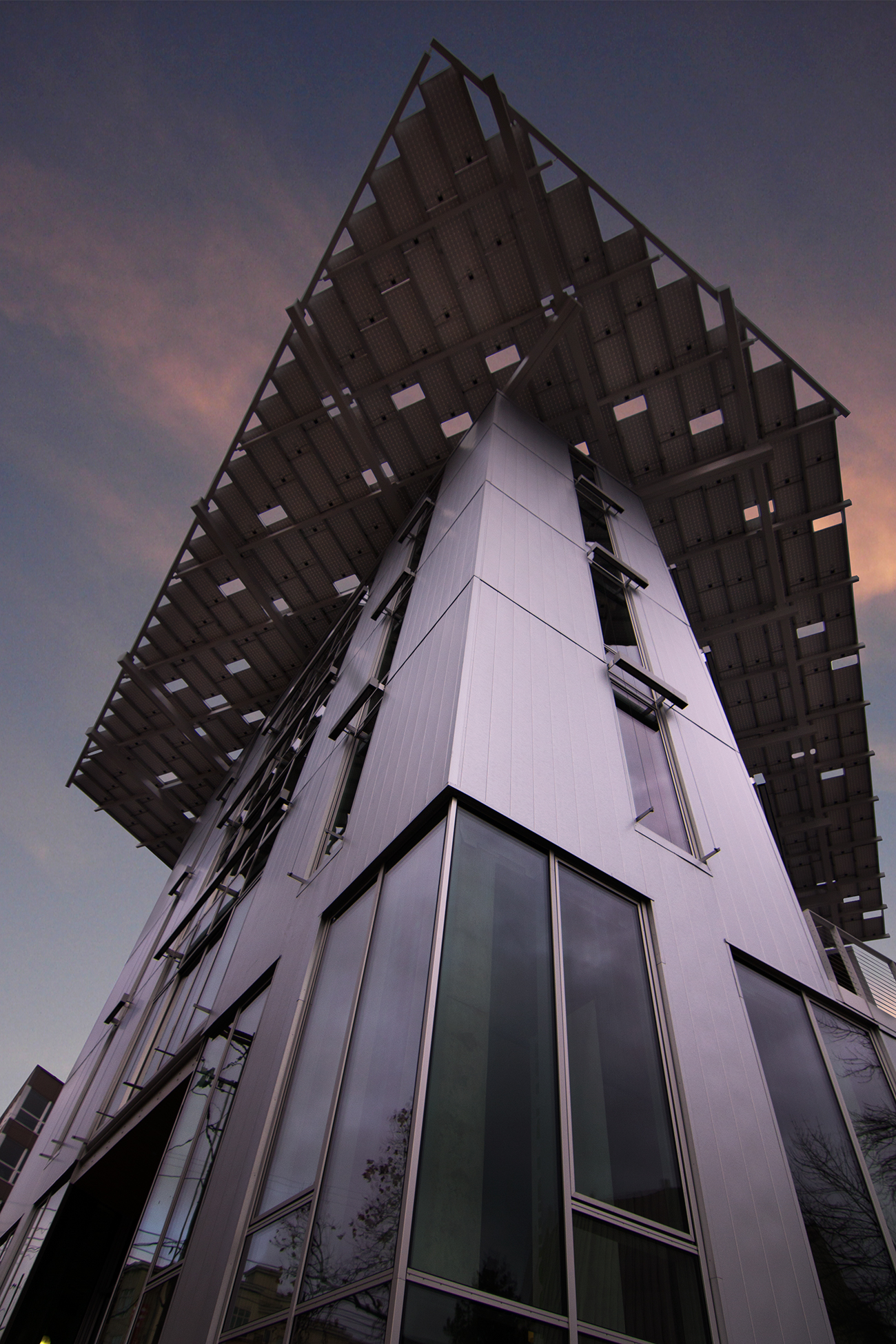
View of the Bullitt Center’s Solar Panel Roof from Below
The Bullitt Foundation selected this site for a number of reasons: its centrality; the specific height restrictions of adjacent parcels that safeguard the building’s solar access; its inclusion in the Central Area Economic Empowerment Zone; the relative lack of office space in the neighborhood; and, finally, its access to a pocket park immediately to the west of the building.
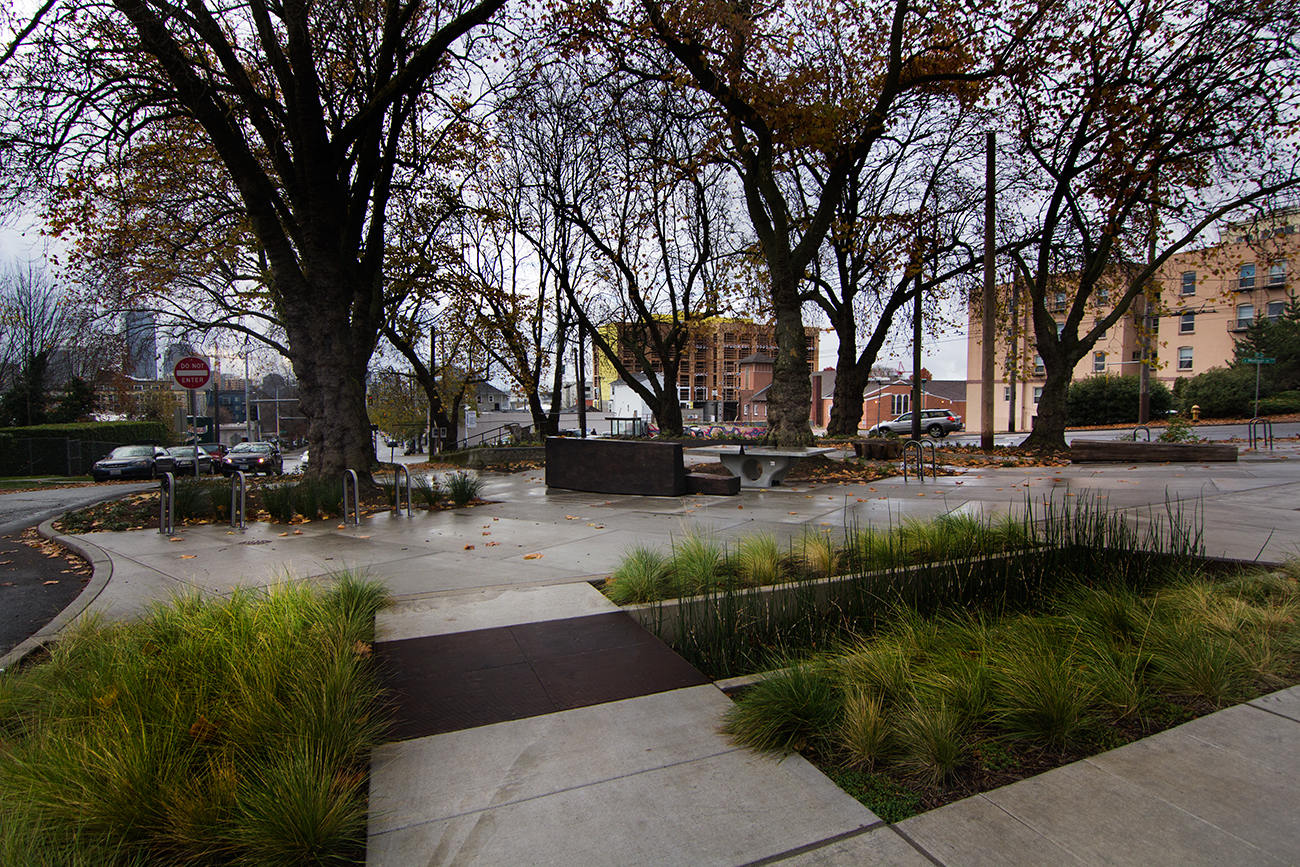
McGilvra Place Park
Technically a “street,” the McGilvra Place Park belongs to the Seattle Department of Transportation and is managed by Seattle Parks and Recreation (now with maintenance support provided by the Bullitt Center). Funded by roughly $350,000 from the Parks and Green Spaces Levy Opportunity Fund and another $350,000 from private fundraising spearheaded by the Bullitt Foundation, what was once a simple triangle of grass surrounded by mature trees has become a gathering space for the community, complete with outdoor ping pong table, bench wall, and accessible pathways. Like the Bullitt Center, the park is its own Living Building Challenge project, the first to be certified under the LBC’s “site” typology.
More to follow soon…the tour will go inside for the next post.
– Zack
Connect with me at +ZacharySemke
FIELD NOTES
Welcome to Hammer & Hand’s Field Notes blog! We are a general contractor serving the Portland and Seattle areas. Read through our posts for articles on home remodels, building new homes, custom woodwork, high performance building, commercial tenant improvements, project highlights, and more.
Back to Field Notes

JOIN OUR NEWSLETTER
- Email Address
Connect with Us – portland
Connect with us – seattle.
Bullitt Center Tour
AEE-Columbia River Chapter and Oregon ASHRAE are proud to present a building tour of the Bullitt Center in Seattle! The Bullitt Center is one of the first Living Building certified facilities in the United States. It features net zero energy and water, and was designed “to show what’s possible today, changing the way people think about high performance green buildings.”
It features many impressive energy systems, such as:
- Ground source radiant HVAC system with heat recovery
- Extensive solar array
- Smart building controls and daylighting strategies
- Extensive water management tools w/composting toilets and rainwater catchment
- Regenerative elevator and “irresistible stairway”
- …and that’s just the start…
More information here: http://www.bullittcenter.org/
Join AEE-CRC and OR ASHRAE for a field trip to Seattle to tour this amazing building, hear from experts about the systems, and network with your colleagues on the chartered, air-conditioned bus. Siemens has also sponsored a happy hour so beverages will be provided on the return trip.
Where : We are meeting in the parking lot of the Red Lion Jantzen Beach and we will take a tour bus to the site.
When: Wednesday, July 13, 2016 Leave Portland at 7 am; return at 5 pm
Presenters : Justin Stenkamp, PAE
Cost: $55 (includes transportation on chartered bus and boxed lunch) + $4.02 processing fee
Register Here!
Continuing education credits are available for folks who can self‐certify. Space is limited to 40 seats. Please register ASAP.
Hope to see you there!
Sign in to your account

Panorama Green Team
Bullitt center tour.

WATER WASHING : A constructed wetland of horsetail plants filters graywater before it is infiltrated back into the soil. Primary graywater treatment occurs on this third-floor terrace, where water from taps and showers is pumped to the garden, then dispersed through drip lines into the aerated layers of gravel and soil. The water can be evaporated and the plants can soak up the nutrients. The water is collected and pumped through several times and eventually the clean water goes down gravel tubes into the aquifer.

All Panorama residents were invited to attend this trip, sponsored by the Green Team. All seats on the bus were reserved early and several people were on the waiting list, so we have planned a second trip on September 20, 2018. For details, see EVENTS .
Lacey, Washington
What does 'Kentucky Straight Bourbon Whiskey' mean? Tour the house where it all began

The staff at Oxmoor Farm wants to welcome you into the 233-year-old home the same way that five generations of the Bullitt family might have.
Guests are offered a cocktail from the family’s serving set, a pour of bourbon from the house's private line, and even a comfy seat on their furniture. It’s an unusual approach for an 18th-century home tour, but unlike some of its still-standing peers in Louisville, this hidden gem operated as a private residence into the early 21st century. This is a home, not a museum.
The historic estate is offering a new bourbon experience highlighting the Bullitt family’s influence over Kentucky’s spirits industry. The Bullitts — not to be confused with Diageo’s Bulleit Bourbon — never had a revered family mash-bill and there’s never been any evidence a still operated on their land.
They were attorneys, not distillers.
Even so, they’re responsible for four precious words in the industry that appear on bar and retail shelves worldwide: Kentucky Straight Bourbon Whiskey.
The Bullitt family was more known for the work it did in the insurance industry, explained Tim Knittel, a bourbon industry consultant with Distilled Living, who’s helped create the experiential tour. Researchers have been going through the Bullitt family's papers for more than 20 years, but only recently recognized the family's bourbon legacy.
“The work they did for the distilling industry completely changed everything,” Knittel explained. “This is the home of protecting bourbon whiskey, and what we’ve found in the last few months is incredibly exciting.”
Standing in the room where Kentucky bourbon began
Two weeks before the tours formally began on June 11, I took the ever-crowded Shelbyville Road to Oxmoor Lane and drove a half mile along the west side of Oxmoor Center to a driveway that led to an arguably forgotten slice of Louisville. It’s so close to the mall you can still hear traffic and undeveloped enough that a doe darted in front of my car as I approached the house.
The Bullitt homestead was originally 1,000 acres and so far out in the countryside, it wasn’t included in the city’s earliest directories. The area has steadily developed since the mall opened in 1971, but the remaining 80 acres are protected through a preservation easement with the Kentucky Heritage Council.
The tour begins in the back gardens. The original six-room house from 1791 still exists within the center of the modern estate. An addition was built onto the front of the house in 1829, and wings were added to both sides in the early 1900s. Knittel gestured to the original home’s chimney, which was constructed with bricks from celebrated stone mason, builder, and, yes famed distiller, Evan Williams.
The five generations of Bullitts ran in the same circles as some of the most influential people of their eras. As we migrated inside, Knittel explained that Oxmoor was a meeting place for the original authors of the Kentucky Constitution and that the home's first owner, Alexander Bullitt, helped write it.
“You're standing in the space where some of the work was done to create Kentucky,” Knittel said.
As we stepped out of the modest house and into the 1829 addition, Knittel jumped ahead a generation and told the story of how in 1862 a group of marauders dressed in both Union and Confederate uniforms stormed the front of the house. One of them put a gun to Alexander's son, William Christian Bullitt's, head and said that if he didn't surrender the family’s horses to them, they’d put a bullet in his head.
William Christian, essentially, told them to pull the trigger.
“The leader of the marauders pulled the gun away from his head and saved him in that moment,” Knittel recounted. “And if he had not done that right here in 1862, and the trigger had been pulled, we may not have bourbon as we know it today.”
Why? Because of everything William Christian's family line contributed to bourbon after the fact.
We’ll get to that in a second, though. After a story like that, Knittel suggested we pause for a drink.
Suing the United States government over American Prohibition
Rosser Lomax, the mastermind behind the estate’s cocktail program, led me into the dining room, where he served a light refreshing punch with black tea, bourbon, lemon, and spices. This would have been something the Bullitts might have offered guests in the 19th century, he explained. Lomax drew on family records and historical context to build the cocktail menu.
While we sipped, Lomax and I chatted a bit about the definition and evolution of bourbon in the 1800s, which helped set the stage for the next conversation about legislation.
Glass in hand, we walked into the early 20th-century part of the home.
At the turn of the century, a group of rogue whiskey makers known as rectifiers were putting additives in spirits. Some were harmless, like prune juice, but others like arsenic could be deadly. The Bottled in Bond Act passed in 1897, and William Christian’s son, Thomas Walker Bullitt, was instrumental in creating that law, Knittel explained. This established a set of standards for bourbon and other aged spirits. He also likely contributed to the creation of the Pure Food and Drug Act in 1906, which prohibited the sale of misbranded food and drugs.
Then came the Taft Decision of 1909, when President William Howard Taft had to determine whether flavored spirits qualified as whiskey. This is where the term "straight whiskey" originates. The decision states that if whiskey had any additives besides water, it would be called “blended whiskey.” There's a letter in Bullitt family records from Taft congratulating William Marshall Bullitt, Thomas Walker's son, on his contributions to that outcome.
From there, Taft appointed William Marshall to Solicitor General. This is humorous, because just seven years later, William Marshall sued the federal government on behalf of Kentucky’s distillers, during the onset of American Prohibition. Kentucky distillers had paid taxes on their whiskey barrels, and now they couldn’t sell them.
That didn’t work, of course. Prohibition ended up devastating Kentucky’s bourbon industry.
“He actually helped distillers in Kentucky navigate the lead-up to prohibition,” Knittel said of William Marshall. “Once we understood there was no getting around it, he helped preserve the industry across Prohibition, and then help them reopen.”
Another amusing thing I learned on this tour was Oxmoor Farm was one of the last places in Kentucky during American Prohibition where you could have a completely legal drink of fine bourbon. When the Bullitt family realized the dry spell was about to transpire, they bought enough bourbon from Kentucky distilleries to bottle their own label “Oxmoor Kentucky Whiskey Private Stock.”
Under those laws, they couldn’t sell it or even transport it, but they could drink it and share it.
And in a very full-circle way, this nods to how the estate is interacting with the bourbon industry in the modern world.
This house still has secrets to tell
The final stop on the tour was a small bar located in a stunning neoclassical-style library. The ceilings were carved from Italian plaster and floors were designed to look like the Palace of Versailles . This space was once home to 250 first editions of books, including Issac Newton’s "Principia Mathematica," with the author’s handwritten notes in the margins, and a copy of the "Theory of Relativity" that Albert Einstein signed for Marshall Bullitt in 1939.
Those were donated to the University of Louisville’s rare books collections in the mid-20th century.
In the library, Lomax offered me a pour of Oxmoor Kentucky Straight Bourbon Whiskey Volume III, sourced from two modern Kentucky bourbon distilleries. They call it Volume III because decades after American Prohibition, the family bottled a second line sometime in the 1960s. The intention is to produce other volumes as well, through Oxmoor Bourbon Company, which is a for-profit business owned by the nonprofit Oxmoor Farm Foundation that oversees the property. The proceeds from the company go toward supporting the historic mission of the foundation.
And while my hosts welcomed informal conversation throughout the experience, now that the official tour was over, Lomax, Knittel and Shirley Harmon, the curator and historian at Oxmoor Farm, and I had a chance to talk more freely.
Harmon explained the property only stopped being a home because the final Bullitt to inherit it, Tommy, never had any biological children. He died in 1991 and willed the property to a trust. His wife continued to live in the house until she passed in 2005.
“He wanted it to be able to be used in some way to educate Kentuckians,” Harmon said.
Over the past two decades, the foundation has explored a variety of ways to do that.
The Bullitt family enslaved people from 1792 to 1862, and researchers have been working with several of their descendants as well as archeologists to tell that story through different programming. Once the archaeological digs are complete, they intend to create exhibits on the formerly enslaved people’s dwellings that still stand on the grounds. Three descendants are serving on the advisory committee for that project.
The house formally opened for historical tours in 2019, and launched a concert series known as "Evenings of Note."
And the foundation is still uncovering more about the property and the family every day. The Bullitt family papers are one of the largest collections at the Filson Historical Society , spanning 185 cubic feet. When Harmon first began working with the papers in 1999, bourbon was in a lull. She wasn’t watching for that connection, and now that she’s searching for it she’s seeing so many links, she didn’t see before.
The Bullitt family's is intricately intertwined with three centuries of Kentucky history. And the house still has plenty of secrets to share.
“I always tell people to think back to the (18th century) room you first walked into, and now you're standing in this very opulent, Gilded Age room,” Harmon said. “We've walked through three centuries of American history, and we have not left this house. We're under the same roof.”
Features columnist Maggie Menderski writes about what makes Louisville, Southern Indiana and Kentucky unique, wonderful, and occasionally, a little weird. Sometimes she writes about bourbon, too. If you've got something in your family, your town or even your closet that fits that description — she wants to hear from you. Say hello at [email protected]. Follow along on Instagram @MaggieMenderski.
Want to go?
WHAT: Oxmoor Bourbon Company's Origins Tour and Tasting
WHERE: Oxmoor Farm, 720 Oxmoor Lane, Louisville
COST : $42, plus fees and taxes
RESERVATIONS: Oxmoor Farm is currently accepting tour reservations for June, July and August. Tours are by appointment. To book visit oxmoorbourbon.com .
Plan Your Lyubertsy Holiday: Best of Lyubertsy
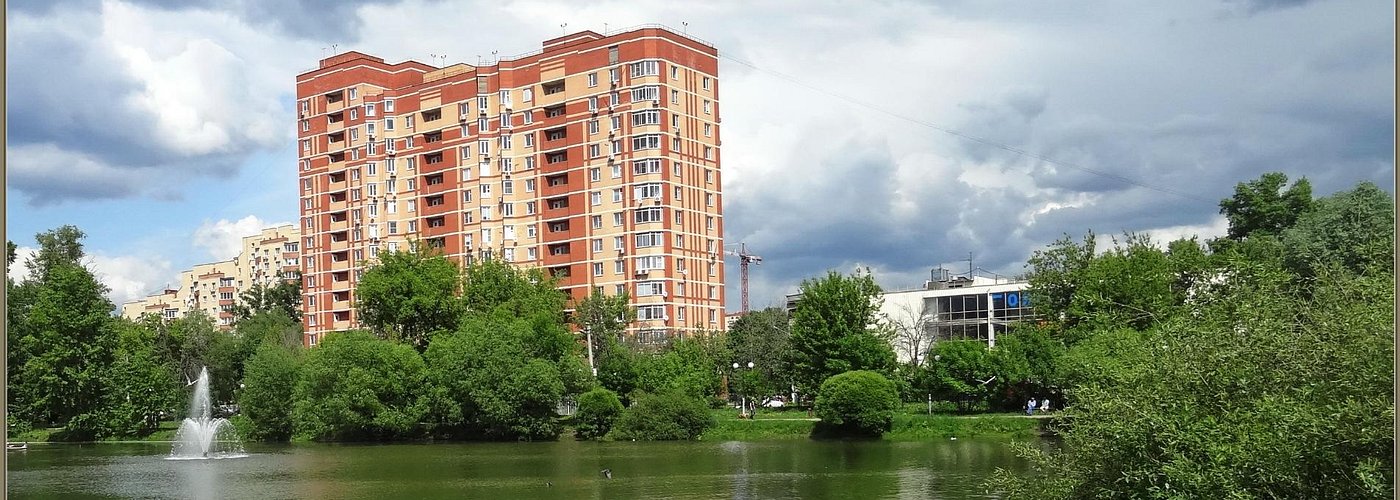
Explore Lyubertsy
Essential lyubertsy.
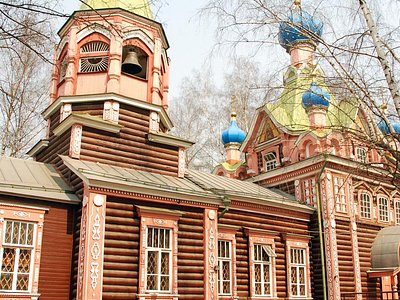
Lyubertsy Is Great For
Eat & drink.

Things to Do in Elektrostal, Russia - Elektrostal Attractions
Things to do in elektrostal.
- 5.0 of 5 bubbles
- 4.0 of 5 bubbles & up
- Good for a Rainy Day
- Good for Kids
- Good for Big Groups
- Adventurous
- Budget-friendly
- Hidden Gems
- Good for Couples
- Honeymoon spot
- Good for Adrenaline Seekers
- Things to do ranked using Tripadvisor data including reviews, ratings, photos, and popularity.

1. Electrostal History and Art Museum

2. Statue of Lenin

3. Park of Culture and Leisure
4. museum and exhibition center.

5. Museum of Labor Glory

7. Galereya Kino
8. viki cinema, 9. smokygrove.

10. Gandikap
11. papa lounge bar, 12. karaoke bar.
Expedia Rewards is now One Key™
Elektrostal, visit elektrostal, check elektrostal hotel availability, popular places to visit.
- Electrostal History and Art Museum
You can spend time exploring the galleries in Electrostal History and Art Museum in Elektrostal. Take in the museums while you're in the area.
- Cities near Elektrostal

- Places of interest
- Yuri Gagarin Cosmonaut Training Center
- Central Museum of the Air Forces at Monino
- Peter the Great Military Academy
- History of Russian Scarfs and Shawls Museum
- Ramenskii History and Art Museum
- Bykovo Manor
- Pekhorka Park
- Balashikha Arena
- Malenky Puppet Theater
- Drama Theatre BOOM
- Balashikha Museum of History and Local Lore
- Pavlovsky Posad Museum of Art and History
- Saturn Stadium
- Church of Vladimir
- Likino Dulevo Museum of Local Lore
- Orekhovo Zuevsky City Exhibition Hall
- Noginsk Museum and Exhibition Center
- Fairy Tale Children's Model Puppet Theater
- Fifth House Gallery
- Malakhovka Museum of History and Culture

IMAGES
COMMENTS
Public tours of the Bullitt Center are offered most Tuesdays at 4:00 PM and Saturdays at noon. Tours typically take about an hour and are limited to 15 guests. Led by trained volunteer docents and UW CID graduate students, these tours can be scheduled online through Eventbrite. Tickets are $10/person and are non-refundable. On the Eventbrite ...
The Bullitt Center Generated 30% More Energy Than It Used in Its First 10 Years Building shows what's possible... Oct 1: National Solar Tour. As part of the National Solar Tour, the Bullitt Center will be offering tours this Saturday, October 1, 2022... Composting Toilets: Lessons Learned. The Bullitt Center was designed to show what's ...
Bullitt Center Tour Overview. The UW Center for Integrated Design (CID) operates the tour program at the world-renowned Bullitt Center, a Living Building that opened in 2013. Public Tours. Public tours of the Bullitt Center are offered most Tuesdays at 4:00 PM and Saturdays at noon. Tours typically take about an hour and are limited to 20 guests.
Adjacent to downtown, the Bullitt Center is near many transportation options, with more than 20 bus routes, a street-car line, and a soon-to-be-completed Light Rail station all within half a mile.
Share. The Bullitt Center, a six-story, 50,000 square foot office building in Seattle that aspires to be the world's greenest commercial building, opens its doors to the public today on Earth Day ...
The Bullitt Center's Brad Kahn discusses the building's hydrology with H&H's Aubrey Jenkins, Suzanne DuBois, and Laura Pieroni. The Bullitt Center, like the Douglas - fir forest before it, has become a healthy part of the hydrologic cycle again. The process begins at the rooftop where the building harvests rainfall and sends it down six ...
Top ways to experience nearby attractions. Space Needle & Seattle Center Small Group Private Walking Tour. 4. Historical Tours. from. $161.50. per adult (price varies by group size) LIKELY TO SELL OUT*. Viator Exclusive Day-Tour From Seattle to Mt. Rainier.
The Bullitt Center is frequently described as the greenest commercial building in the world. It was designed and built to show what's possible today, as an effort to move society further, faster ...
Brad explained that while a typical office building's heating and cooling consumes 40% of building energy, the Bullitt Center's heating and cooling consumes just 2-3%. This modest load is readily handled by a ground source heat pump, whose efficiency gets a 15% boost from its ground loop, a series of 400′ deep wells, each 2″ in diameter ...
Our Tour of The Bullitt Center: An Intro. November 15, 2013 By Zack Semke. The Bullitt Center's Brad Kahn leads Hammer & Hand through the Living Building's systems. (Editor's Note: this is the first in a series of Bullitt Center tour posts by Hammer & Hand in Seattle. Please also see our posts about the Living Building's Discovery ...
Bullitt Center Tour. Posted by Kevin Campbell . AEE-Columbia River Chapter and Oregon ASHRAE are proud to present a building tour of the Bullitt Center in Seattle! The Bullitt Center is one of the first Living Building certified facilities in the United States. It features net zero energy and water, and was designed "to show what's possible ...
The Bullitt Center, described by Architectural Digest as "the greenest office building in the world", offers public tours 2 days a week, most weeks. Tours will begin in the second floor lobby, and include the building's mechanical and electrical rooms, the grey water and rain water treatment systems, vacuum toilets and the "irresistible" stairway.
Bullitt Center Tour. On May 3, 2018, twenty Panorama residents, accompanied by CEO/CFO Bill Strader and President/COO Matt Murry, took a Panorama bus to Seattle to tour the Bullitt Center, recognized as the greenest commercial building in the world. The building has a variety of tenants that are required to commit to energy and water budgets.
38 Followers, 14 Following, 2 Posts - Bullitt Center Tours (@bullittcentertours) on Instagram: "The Greenest Office Building in the USA. Located in Seattle Washington, the Bullitt Center is certified as a Living Building."
Top Dzerzhinsky Landmarks: See reviews and photos of sights to see in Dzerzhinsky, Russia on Tripadvisor.
WHAT: Oxmoor Bourbon Company's Origins Tour and Tasting. WHERE: Oxmoor Farm, 720 Oxmoor Lane, Louisville. COST: $42, plus fees and taxes. RESERVATIONS: Oxmoor Farm is currently accepting tour ...
Lyubertsy Tourism: Tripadvisor has 1,975 reviews of Lyubertsy Hotels, Attractions, and Restaurants making it your best Lyubertsy resource.
Things to Do in Elektrostal. 1. Electrostal History and Art Museum. 2. Statue of Lenin. 3. Park of Culture and Leisure. 4. Museum and Exhibition Center.
Find Property Information for 50 Bullitt Park Place, Columbus, OH 43209. MLS# 224018346. View Photos, Pricing, Listing Status & More.
Cities near Elektrostal. Places of interest. Pavlovskiy Posad Noginsk. Travel guide resource for your visit to Elektrostal. Discover the best of Elektrostal so you can plan your trip right.